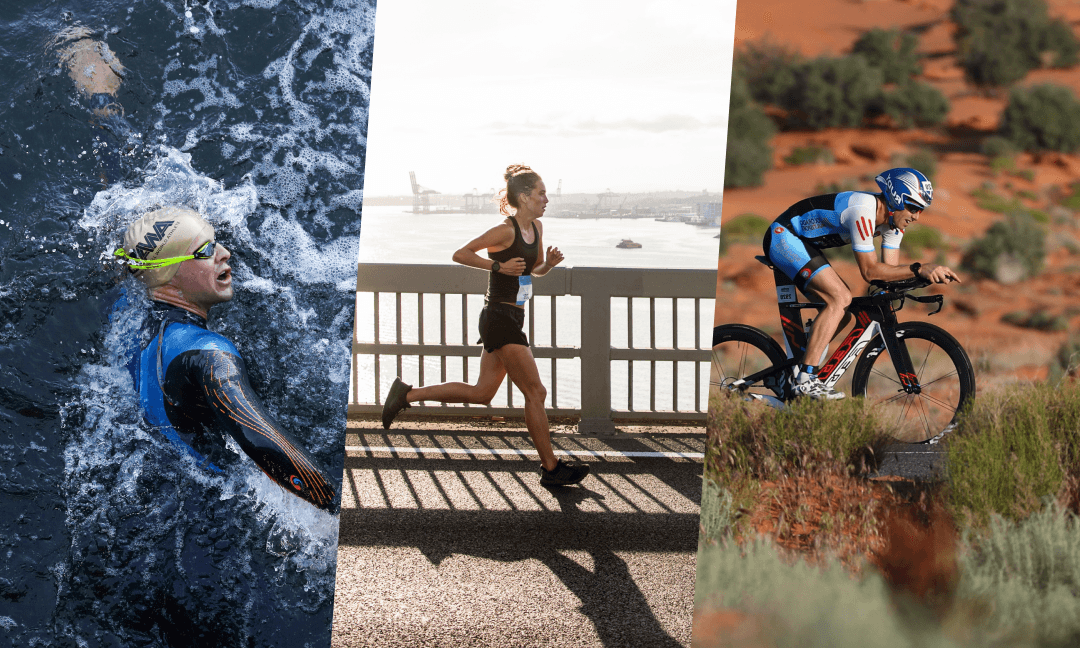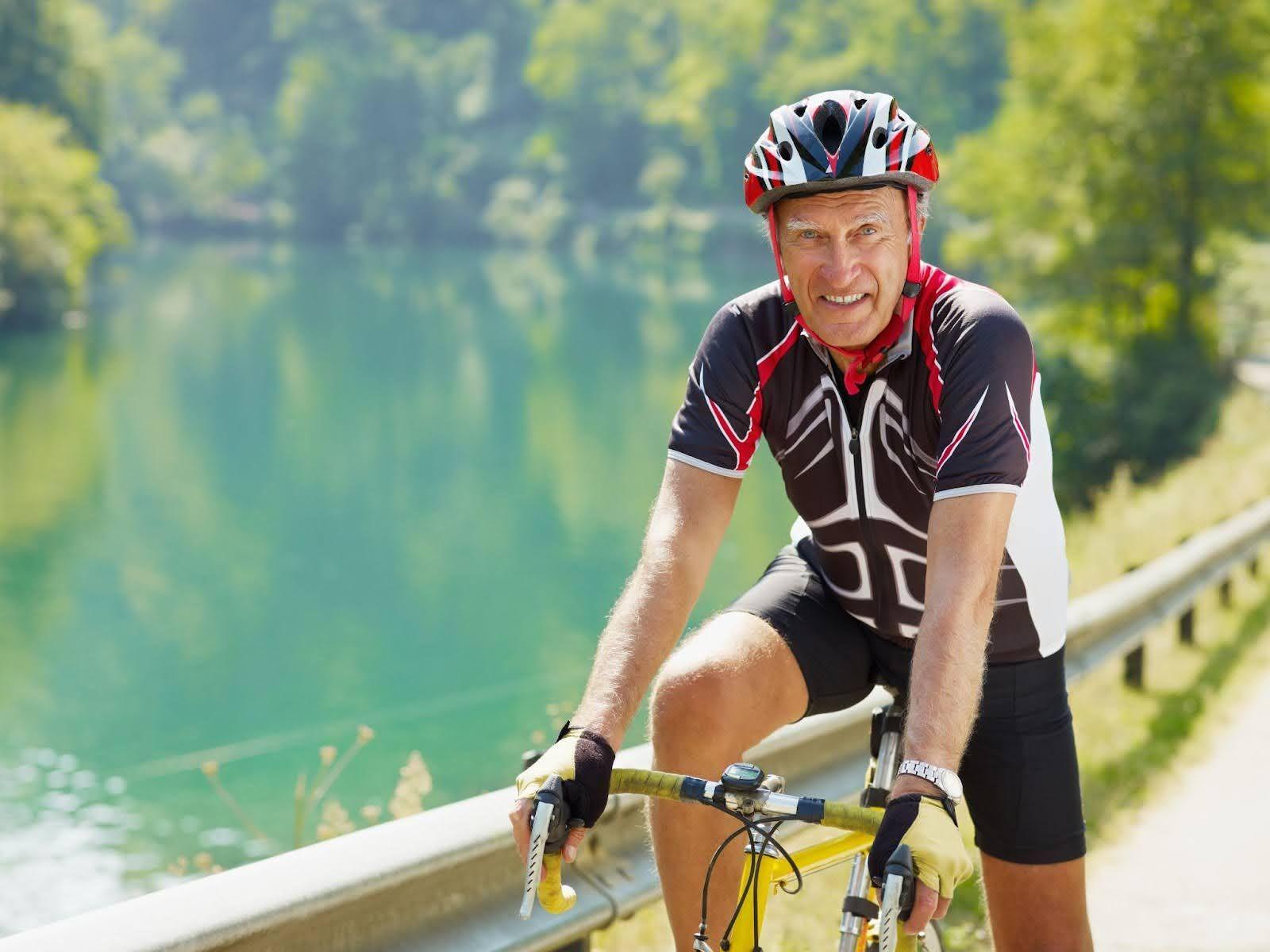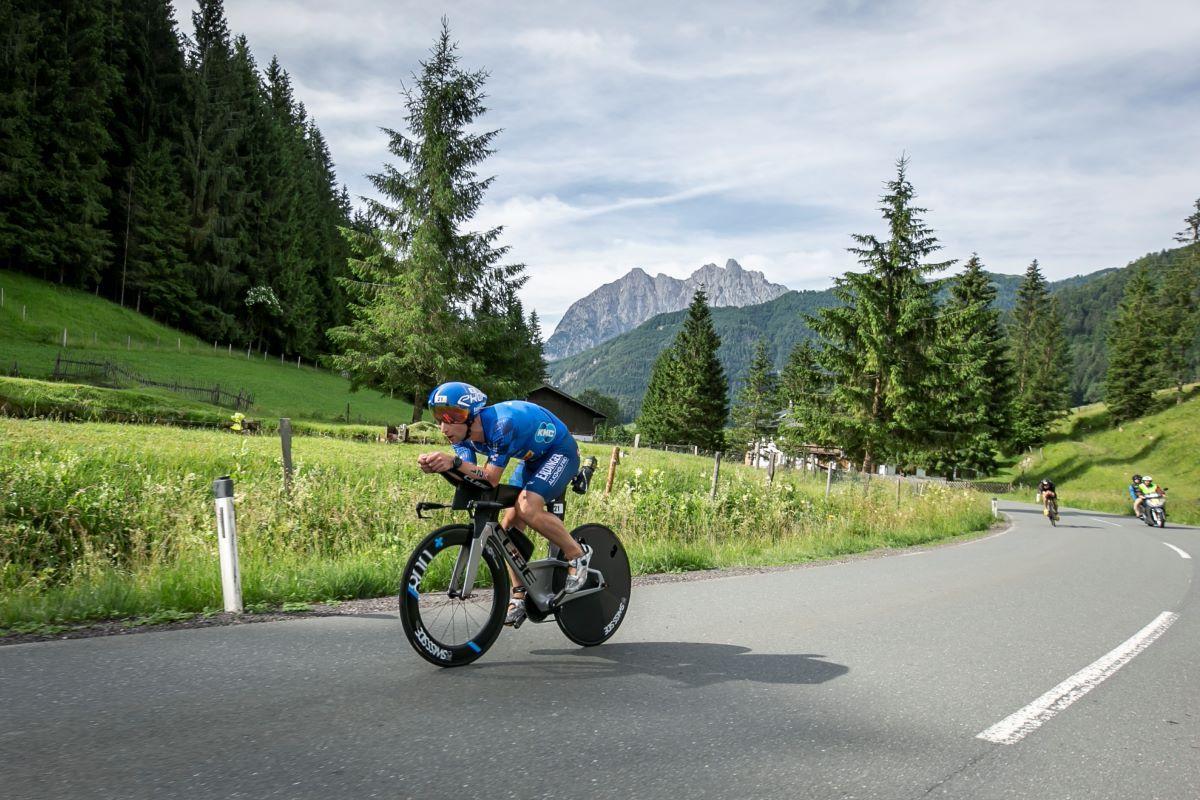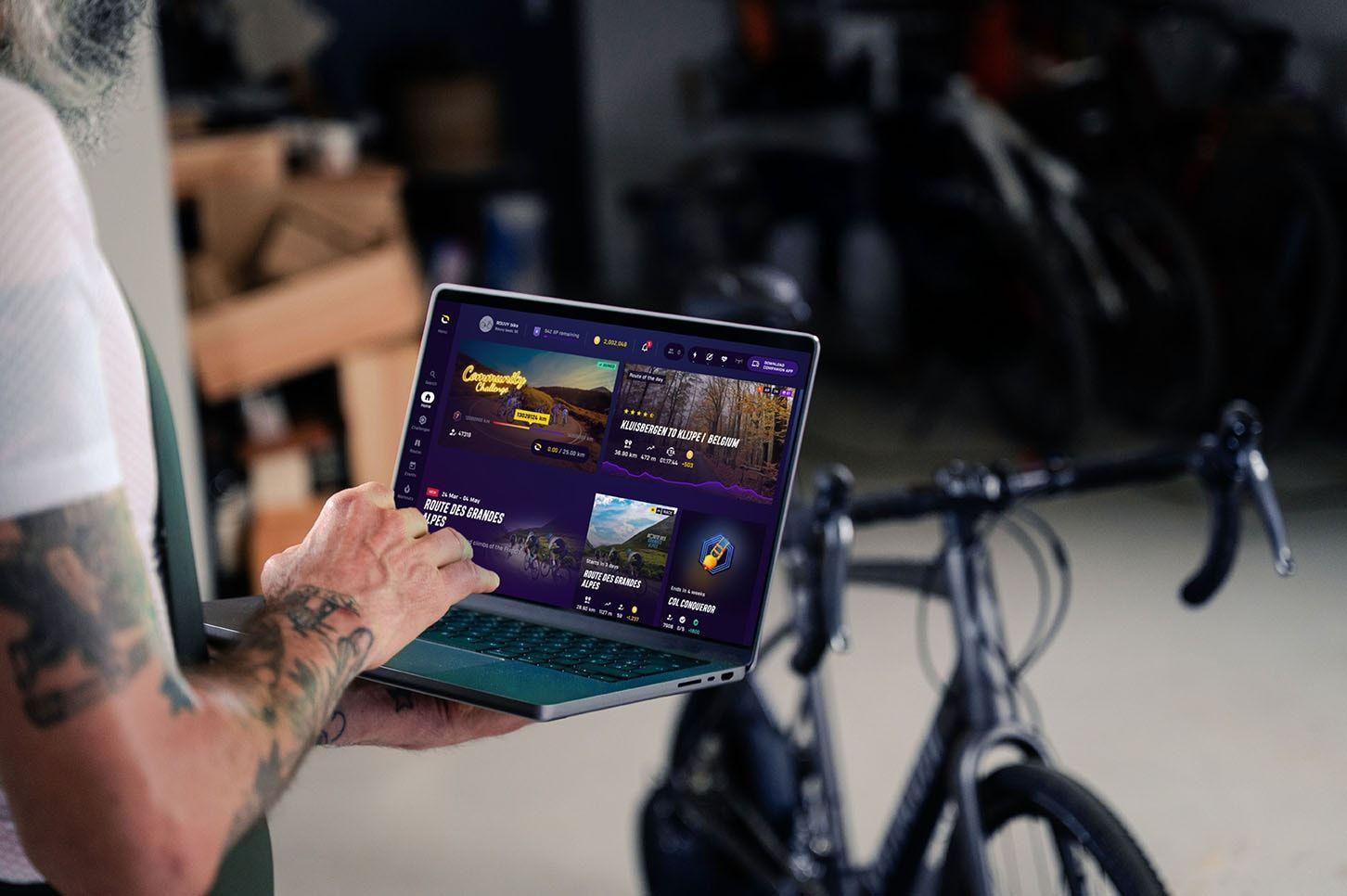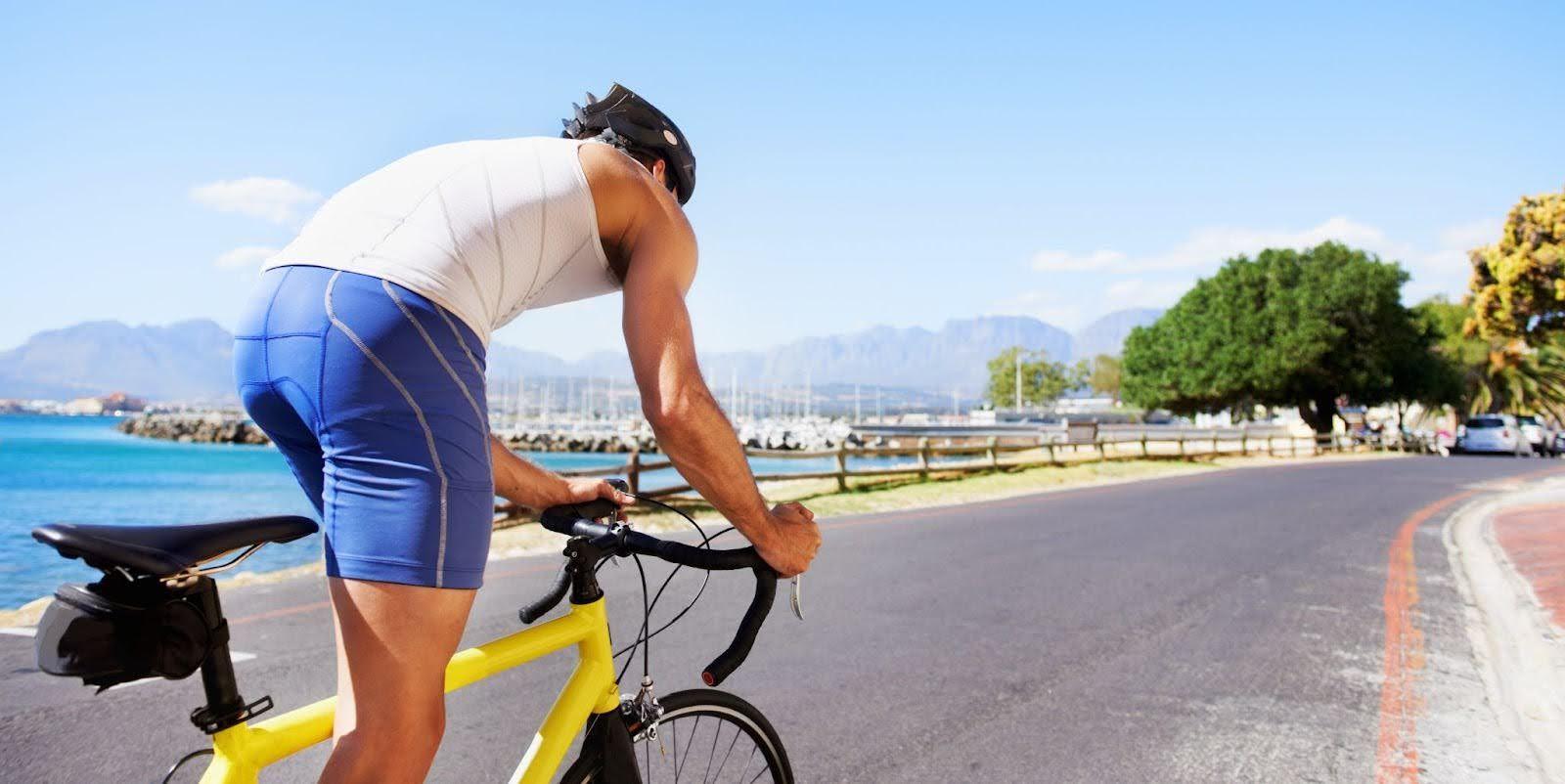In a perfect world, with perfect weather, we’d all be able to ride outside throughout the year. But reality doesn’t work that way and for most people, cycling outside in bad weather is a drag. Treacherous black ice, rain-soaked roads and biting winds don’t exactly scream “let’s go for a fun spin!” or fill us with a burning desire for some fresh air. Riding in cold, wet, or rainy conditions can be uncomfortable, but with the right gear and being properly prepared, you can still enjoy your ride. But here’s the thing: winter riding, for all its obvious challenges, does offer a unique blend of physical reward, mental toughness and peace on the road. While most cyclists pack their bikes away at the first sign of frost, dedicated cyclists know that the off-season is where the real benefits are there to be made.
Winter cycling helps you maintain your fitness (consistency is king!), build mental resilience and even rediscover the joy of an empty road. Yes, it requires more prep, better gear and an extra dose of motivation—being prepared for winter cycling is essential to stay safe and comfortable. But the payoff is worth it. Overcoming these challenges can make you feel good, both physically and mentally. But what about the days when it’s simply too grim to go outside or you’re not in the mood? That’s where ROUVY comes in. As a realistic virtual cycling platform, ROUVY offers scenic, structured and indoor rides from your own home that keep you riding all year round… whatever the weather outside. But more about that later.
This first part of our Ultimate Guide for Winter Riding will cover everything you need to know to thrive outside in the colder months - gear, safety, health and bike maintenance. Let’s get into it.
1. Benefits of cycling in the cold
Physical and mental toughness
Winter cycling is not just about keeping your legs turning; it’s about embracing the discomfort and building up resilience. A common thought among cyclists is to incorporate running into their winter routines, as it helps build resilience and aids recovery. Cold temperatures make your body work harder to stay warm, increasing calorie burn and cardiovascular strain in a good way. Mentally, pushing through the wind and cold will build the kind of discipline that pays off in race season.
Maintain fitness through the off-season
Don’t let the winter slump get you. Keep your training base solid. Riding through winter maintains aerobic endurance, muscle tone and consistency - all of which makes spring ramp-up easier. Plus it prevents weight gain that sneaks in during the holidays. Cyclists who keep their fitness levels up during the winter will start the outdoor season with a big advantage over cyclists who didn’t exercise.
Nature and solitude
Cycling in the winter has a very different impact on the senses. Fewer cyclists on the road and trees shedding their leaves means winter rides are quiet and reflective. With less congested roads to navigate, you might well find yourself the only cyclist brave enough to be out there. Winter also opens up popular trails, transforming them into peaceful, crowd-free routes perfect for solitude and a variety of riding styles. With just crisp air, clear views and the gentle purr of your drivetrain, it’s an ideal way to get a new perspective on the activity you love. Enjoy the silence.
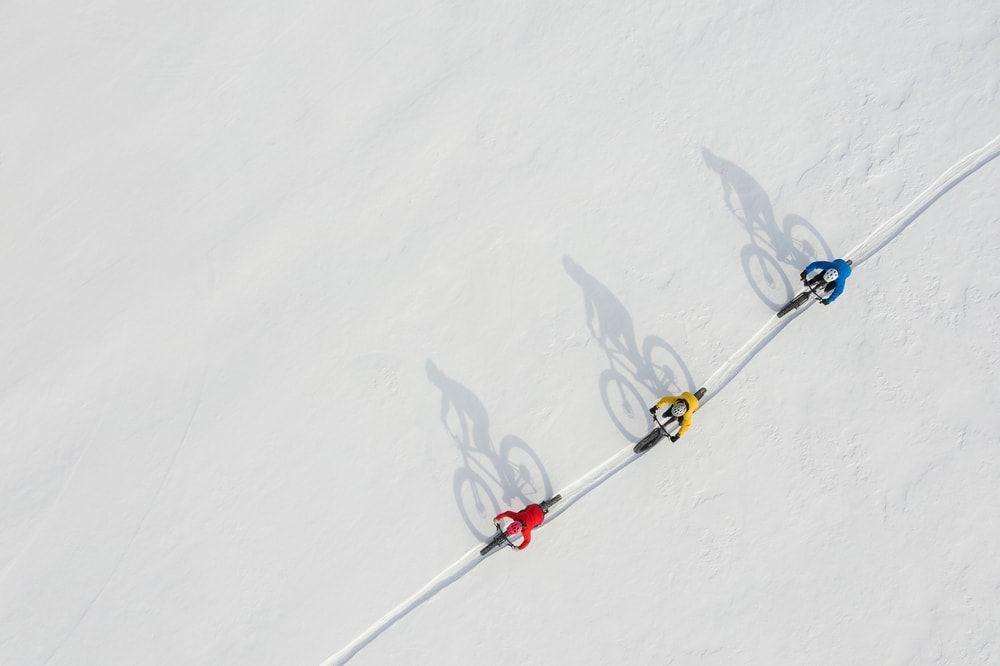
2. Essential gear for winter cycling
Master the layering game
Layering is your first line of defence against the elements and wearing the right winter cycling gear is essential; you need to be smart and practical about it. The trick is to wear lots of thin breathable layers that trap pockets of insulating air - rather than one thick one. Start with a moisture-wicking base layer to move sweat away from your skin. Add a thermal mid-layer to trap warmth and finish with a windproof or waterproof (ideally both) outer shell to block the chill.
Recommended winter cycling gear to invest in:
Thermal jerseys and bib tights: Fleece-lined, breathable and water-resistant.
Waterproof jacket: Look for taped seams and ventilation. The fit should be snug but still allow movement. It’s worth going for quality here as it could make the difference between saving you from a drenching. Shower-proof is not the same as waterproof.
Insulated waterproof gloves: Dexterity is important, so test your shifting and braking while wearing them.
Shoe covers or winter cycling boots: Neoprene overshoes do wonders for keeping toes warm. These options help keep your feet dry and warm during wet and cold rides. A good pair of warm socks is also a must-have. As a last resort, you can use more robust footwear or additional protective gear to keep your feet comfortable.
Beanie, balaclava or thermal headband under your helmet: That your body loses 50% of it’s heat through your head is actually an urban myth. It’s more like 10% but it’s still important to cover up and keep your head warm.
Neck buff: Versatile protection for your face and neck.
Eye protection to stop water, grit or mud getting in your eyes.
Be safe, be seen
With shorter days, more gloomy, grey skies and more chance of mist, fog or rain to obscure your vision, being seen is a non-negotiable necessity. To stay visible to drivers, always use proper lighting and wear reflective gear.
Be sure to use:
Bright front and rear lights (flashing modes help during daylight)
Reflective jackets or vests
Reflective tape on crank arms, wheels and helmets
High-vis isn’t just for commuting - it’s also essential for rural rides in low light.
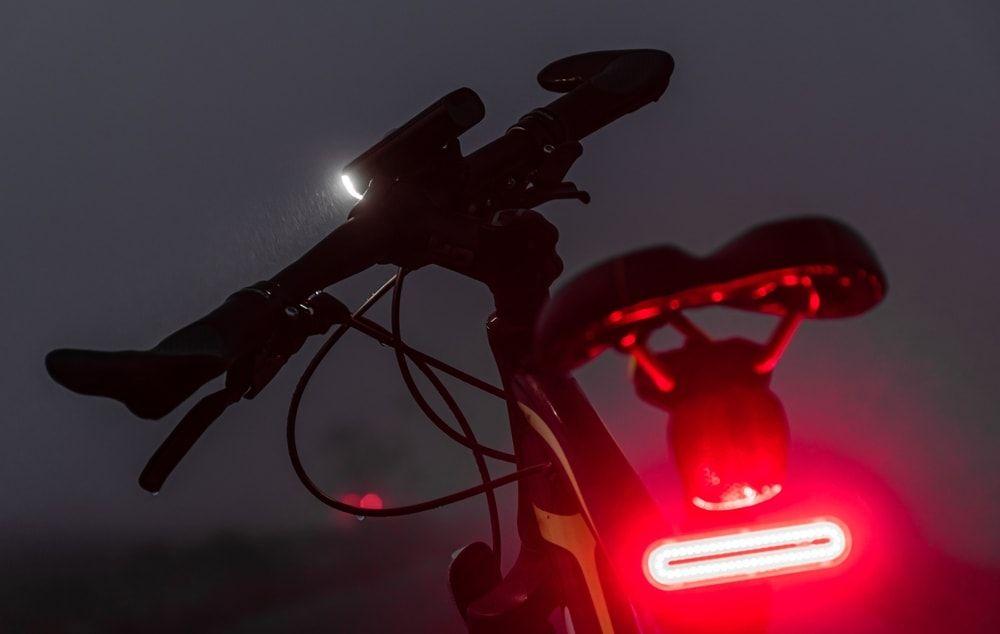
3. Bike preparation and maintenance for bad weather
Winterize your setup
Your summer setup won’t cut it in winter. Prep your bike for grit, wet and cold with these steps. Gravel bikes are a good option for winter riding due to their versatility and ability to handle gravel paths or roads:
Tires: Choose wider tires (28–32mm) with a grippy tread. Deflate them and lower the PSI slightly for better traction in slippery conditions. For really icy conditions or cycling in snow, use tyres with metal studs as they provide improved grip.
Front and rear fenders: Full-length mudguards with flaps will save your backside, and your drivetrain, from road spray. There are a number of mudguard types available, and using both front and rear mudguards significantly improves comfort and protection by reducing spray and debris.
Lubrication: Wet lubes resist being washed away by rain and snow. Reapply more frequently.
Drivetrain protection: Consider using a chain wax or even a cheap chain you’re willing to replace more often. Make sure to keep your gears clean and well-lubricated for smooth shifting and optimal performance.
Weekly maintenance tips
You’re under constant attack from the elements so winter conditions will accelerate wear and tear. Create a routine habit of:
Rinsing down your frame after every ride. If the road has been salted to thaw ice, salt can be especially damaging and corrosive for your bike so take extra care to wash it away.
Wiping your chain and reapplying lube.
Checking brake pads and cables for wear. Also, inspect and clean your wheel rims to maintain braking performance, especially after riding in wet conditions.
Storage matters too - keep your bike indoors or covered if possible to prevent rust and corrosion. After wet rides, dry any steel or chromed parts to prevent rusting.

4. Safety tips for riding in snow and rain
Whether you’re cycling in the rain or snow, slippery roads mean you need to ride smarter and be even more aware of the conditions and environment around you. Winter conditions increase the risk of accidents, so taking extra precautions is essential:
Shift your weight more to the rear wheel when riding to increase traction.
Brake earlier and softer: Feather your brakes to avoid skidding. Water can form slippery surfaces, increasing the risk of skidding, so brake gently and in advance.
Corner with care: Slow down and avoid sudden, abrupt turns. Keep your weight centred and lean the bike, not your body.
Scan ahead constantly: Look out for icy patches, puddles that may form hazards or conceal potholes, and wet leaves.
Water is more likely to collect at the side of cambered roads so avoid frozen puddles by giving extra berth to the side of the road.
If you do hit ice, aim to steer straight ahead, stop pedalling, and try not to brake if possible as this could make you skid.
Slow down: Winter isn’t about speed; it’s about staying upright and maintaining a steady effort.
Always signal early and clearly. When riding in a group, communicate to reduce problems and avoid being squeezed by passing vehicles.
5. Gear for wet weather
Ensure your brakes are in top condition - disc brakes are best, but if you have rim brakes, make sure they’re well-maintained and check the wheel rim for wear and clean it after your ride. Preparing your bike and gear for a wet ride is essential; consider using waterproof gloves and other accessories to protect both yourself and your equipment. Don’t forget that wet brakes are less effective. Use fenders with enough clearance to protect you from road spray. Don’t forget to carry a microfibre towel or anti-fog wipes to keep your glasses clear. At the end of your ride, take time to care for your gear and bike to prolong their lifespan.
6. Health and injury prevention
Hypothermia and frostbite
You might think you are tough but the weather is always tougher. Don't pick a fight you won't win. If your skin goes numb or pale or you start shivering uncontrollably, it’s time to call it a day head home. Watch out for burning fingers or toes, an early sign of frostbite. Layering is key but don’t push through pain to prove a point.
Warm-up and cool-down
Start slow to get blood flowing to your extremities. When you start riding outside, go extra-careful for the first few hundred metres to get a feel for the conditions. If you can, try a short spin on a trainer or gentle indoor warm-up if needed. Post-ride, get out of your wet clothes immediately. Sip something warm and do dynamic stretches to stay mobile.
Nutrition and hydration
You might not feel thirsty but your body is still sweating and dehydrating underneath those layers so remember to still hydrate. Use insulated bottles to prevent water from freezing if it's really cold. Take energy-dense snacks like dates, energy bars or nut butters that won’t turn rock hard in the cold.
Immune system support
Cold weather training can really tax your immune system. Prioritise sleep, eat vitamin-rich foods and consider supplements like Vitamin D during low sunlight months to give your body a boost.

7. Experienced rider tips
Ride local loops: When conditions are unpredictable, ride a short loop you can repeat without taking you too far from home base. This gives you options to bail if the weather worsens.
Use a second bike: Many cyclists have a “winter bike” - a cheaper, heavier bike with mudguards and budget components. It’s better suited to cycling in bad weather and will not ruin your week so much if it gets dirty or sustains wear and tear from the weather.
Keep a dry kit in your car or at your workplace: If you commute or finish rides elsewhere, always stash a change of warm, dry clothes and a towel somewhere easily on hand. Be sure to include essentials you might need for your destination, so you’re prepared when you arrive.
Commuting tips: Consider using parking facilities to combine driving and cycling for added convenience and safety, especially in winter conditions.
Join a winter group ride: Riding with others increases motivation, accountability and visibility. For longer winter rides, plan to schedule a break to rest and recover—this helps maintain performance and makes the ride more enjoyable. It’s good to know you’re not alone in wanting to ride outside.
Reward yourself post-ride: A hot drink, warm shower or hearty meal can become a welcome ritual to look forward to.
8. Winter nutrition advice
Your body naturally burns more calories in the cold as it has to work harder to maintain body temperature. Proper nutrition during winter training is essential to help you reach your full potential and maximize your athletic performance. That means your nutrition plan needs to adjust accordingly:
Pre-ride: Eat a meal rich in complex carbs and some fat 1-2 hours before riding. Oatmeal with nuts or whole grain toast with avocado are good options.
During the ride: Aim for 30-60g of carbs per hour. Choose foods that are easy to chew and digest when cold such as fig bars, banana bread or soft cookies.
Post-ride: Refuel within 30 minutes. Go for a hot meal or smoothie with carbs and protein - good options are soup with bread or a warm protein shake.
Also consider electrolyte tablets or warm herbal teas with a pinch of salt to maintain hydration and mineral balance.

9. ROUVY: your foul weather friend
Sometimes winter throws conditions at you that are simply unrideable. Ice, blizzards or horizontal sleet don’t make for safe or productive rides. Or maybe you’re just not in the mood to go outside and you can’t face wet weather. It can easily happen. That’s where ROUVY comes in for those days of cycling in bad weather . ROUVY delivers training plans and updates direct to your inbox, making it easy to stay informed and motivated. The key to staying fit and healthy is exercising consistently throughout the year and for cyclists who refuse to let the winter season derail their progress, ROUVY offers an effective and enjoyable way to boost your endurance and keep the pedals turning indoors. With ROUVY, you can stay on two wheels all year round, no matter what the weather brings.
Realness without the bad bits
ROUVY is more than just an indoor cycling app - it’s a virtual passport to some of the most iconic cycling routes on the planet. Thanks to real-world video footage and augmented reality (AR) simulation, your smart trainer responds as if you’re actually riding that Alpine pass or winding coastal road in Mallorca. Want to feel that cool wind in your hair? Just turn on your indoor fan and you’re almost there.
Key features that make ROUVY ideal for winter training:
Real-world video routes: There are no computer-simulated environments here. Instead, you’ll ride through real scenery, recorded in high-quality video with authentic terrain resistance. ROUVY lets you experience all sorts of riding conditions—like different weather or road surfaces—from the comfort of your home.
Safety: Without having to worry about ice, poor visibility and traffic, riding indoors removes the danger of accidents from the equation. Focus on your fitness rather than falling off your bike.
Time efficiency: With your pain cave set up, you can jump on your trainer quickly when you feel like it. ROUVY let’s you ride whenever you want, for as long as you want.
Structured workouts: Follow structured workouts or training plans tailored to your specific goals like power, endurance or climbing. Or create your own for a personalized plan.
Integration: Syncs seamlessly with your other training apps like TrainingPeaks, Strava and other fitness tools.
Events and races: Stay motivated by competing in virtual races and monthly challenges.
How virtual rides complement outdoor training
ROUVY isn’t about replacing the road - it’s about filling in the gaps so that you have more freedom to ride when you want to, including participating in virtual events.
There are plenty of times when outdoor riding is not feasible or practical:
Icy or rainy conditions in the winter months, when visibility and traction make riding unsafe, can be particularly challenging for outdoor cyclists.
Short daylight hours also limit riding opportunities, making early morning or post-work sessions necessary.
Focused interval training is often better conducted inside, free from traffic interruptions or hazardous road conditions.
The flexibility and increased time-efficiency of virtual cycling allows you to maintain a consistent training rhythm even when daily conditions vary. For those looking to further optimize their workouts, understanding heart rate myths and recommendations can provide valuable insights for maximizing training efficiency. Many cyclists adopt hybrid schedules, combining midweek interval sessions on ROUVY with weekend endurance rides outdoors, or using indoor warm-ups before heading out for cold-weather commutes. This approach keeps both your body and mind sharp, developing indoor discipline along with outdoor resilience.
For a lot of riders, winter becomes their most consistent training season thanks to virtual tools. As one UK-based rider puts it: “I used to take December off completely. Now I race weekly on ROUVY and hit spring 10% stronger than before.
Others appreciate the social aspect that the activity brings - chatting with teammates mid-ride or on social media, competing in virtual events or setting up training groups keeps your drive high when motivation dips.

